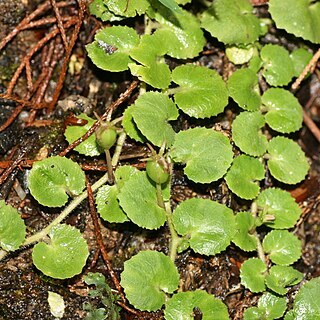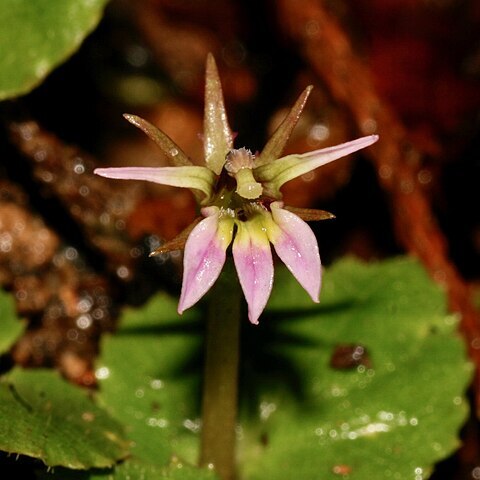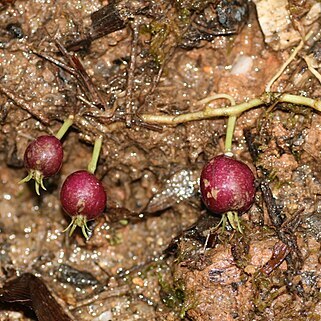Herbs, perennial. Stems prostrate, 12-55 cm, villous, rarely glabrous, simple or branched at base, nodes rooted. Leaves alternate, petiolate; petiole 2-14 mm, puberulent; blade orbicular, reniform, or ovate, 0.7-2.6 × 0.5-2.7 cm, both surfaces glabrous or puberulent, base obliquely cordate or rarely truncate, margin serrate or crenulate, apex acute, obtuse, or rounded. Flowers solitary and axillary; pedicels 0.7-3.5 cm, glabrous. Hypanthium narrowly ellipsoid or urceolate, 2-4 × 2-3 mm, glabrous or villous; calyx lobes linear-triangular, 2.5-6 mm, margin with 2 or 3 pairs of denticles. Corolla purple-red, pale purple, pink, green, or yellow-white, 6-10 mm; tube glabrous or rarely ciliate outside, villous inside; limb 2-lipped; upper 2 lobes linear-triangular; lower 3 lobes lanceolate. Stamens connate above middle; filament tube glabrous; anther tube 1-1.5 mm, back villous; lower 2 anthers barbate at apex. Fruit a berry, purple-red, ellipsoid or globose, 0.7-1.5 cm. Seeds suborbicular, slightly compressed, reticulate. Fl. and fr. all year round.
More
A small creeping herb. It keeps growing from year to year. It lies along the ground and is 12-55 cm tall. The leaves have short stalks. They are oval or heart shaped. They are 1-3 cm long by 1-3 cm wide. They have teeth along the edge. The flowers are purple striped. They are in the axils of leaves. The fruit is a berry. It is oval and black.
Unshaded to shaded moist soils along rivers, along forest roads and in secondary forest, locally abundant in tea plantations, in Java between 600-3,300 metres.
More
A tropical plant. It occurs in Nepal between 800-2500 m altitude. It grows in moist, shady places.



